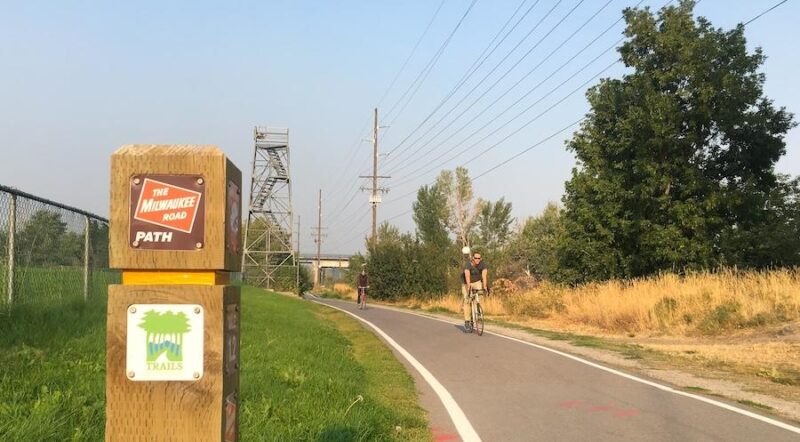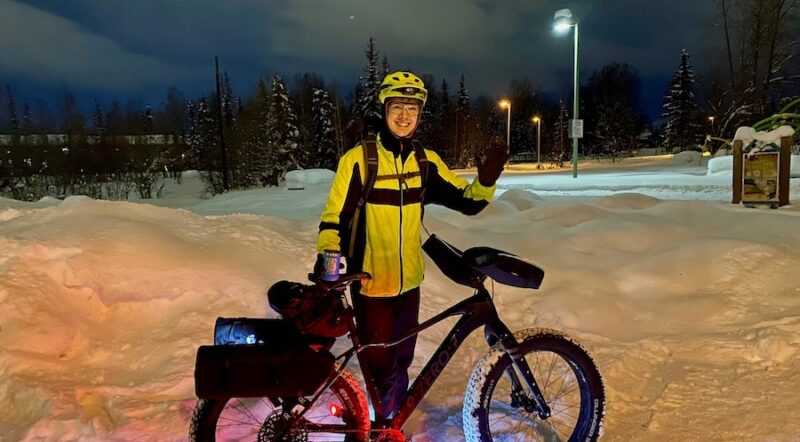Putting Unprecedented Federal Funding for Trails and Active Transportation to Work
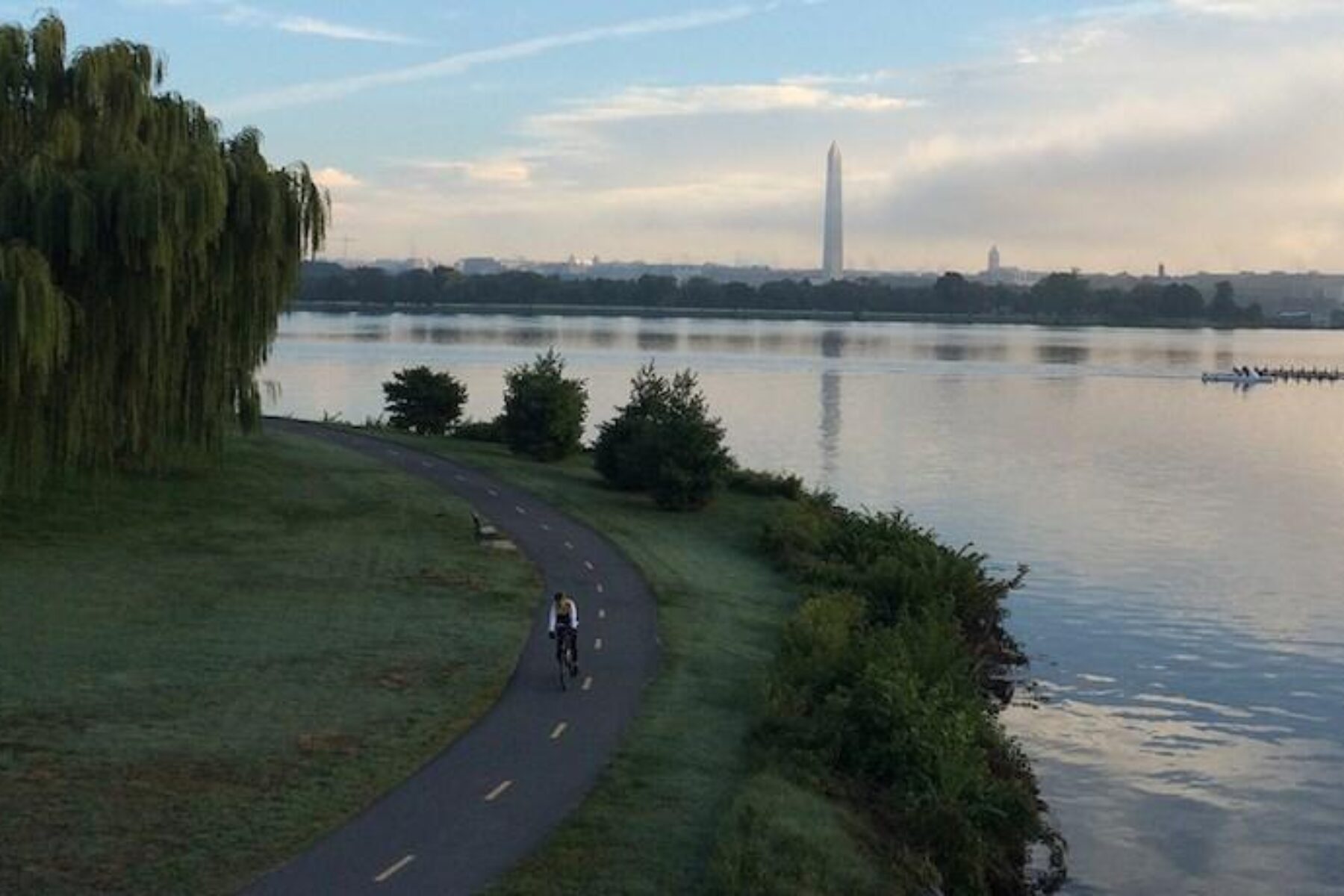
Since the passage of the Bipartisan Infrastructure Law (BIL) in 2021, an unprecedented amount of federal dollars is available to meet some of the ever-growing demand for trail development and connectivity across the United States. The new funding and new eligibilities for active transportation under the law create urgency for communities to access these funds as quickly as possible—to demonstrate the demand that exists for these programs, and to accelerate the creation of trail networks and safe walking and biking routes to routine destinations.
So, now what?
Over the past year, the Rails-to-Trails Conservancy (RTC) team has studied the ins and outs of this law that includes about $1.44 billion in annual funding for Transportation Alternatives (TA) projects—describing it as a launching point to take the trail development movement to the next level, with work yet to be done.
Some of that work is already underway. RTC’s policy team has been working with federal agencies to define the criteria of the trail development programs connected to the bill so that our partners have the best chance of earning funding for ambitious projects that will reshape trail networks in their area—and build better connection across regions and the country as a whole. The funding is about to start flowing, and the time is now for people working on trail, walking and biking networks to identify the best funding sources for their projects.
RELATED: Exploring Federal Funding Programs for Trails, walking and biking
Recently, RTC’s vice president of communications, Brandi Horton, sat down with Kevin Mills, RTC’s vice president of policy, to discuss the path forward for funding trails, walking and bicycling networks in the United States.
Read the interview below, which has been published in an edited format.
Brandi Horton: Before we get into what’s coming, let’s set the stage a little bit for where we’ve been. The past few years have been truly game changing for trails, walking and biking. Tell us a little bit about what’s happened.
Kevin Mills: Well it was years in the making, but a year ago, the Bipartisan Infrastructure Law passed, and it had an unprecedented amount of money for trails, walking and biking. It [also] had new programs so that there’s more variety in the types of ways that you can pursue this [funding, as well as] some policy changes that create some future opportunities. It’s just quite a set of opportunities for us going forward that came from this law.
Since then, we’ve had a year of getting the word out—e.g., what does this all mean, how do you take advantage—and working with [federal] agencies as they define the criteria and get those programs launched. And now we’re really at an interesting moment in that the money is going to start flowing to a greater degree in our movement.
RELATED: Analysis: Bipartisan Infrastructure Bill Passes With New Opportunities for Trails, Walking and Biking
Brandi Horton: It is so interesting, I think, and something that people probably don’t recognize: You pass the bill, and then you also have to do the work with the agencies to make sure that what we interpret in the bill is also what they interpret in the bill, and that the programs can be put to good work. You all have been doing a lot of that really deep work. What we’ve been saying internally is that this is a once-in-a-generation moment, right? This is something that feels unprecedented.
Kevin Mills: It really is.
Brandi Horton: So when you think about that … what are we doing? How are we helping to tap this opportunity across the country?
Kevin Mills: First you just get all that big picture information out there and get everybody up to a certain level of understanding of what we’re dealing with. And then as the real programs and the notices come up, [we need to work] hand in glove with our state and local partners around the country and help them sort through which opportunities [they should] take advantage of—which best fit what they are trying to do, and how [they can be] really competitive about it.
[We want to ensure these programs are] really accessible to all communities, no matter what their income or race or geography—that they’re successful in getting their trail, walking and biking infrastructure built with these resources.
Brandi Horton: So in this unprecedented moment, unprecedented funding—the policy change is also really critical. What changed [in this bill] that makes this even more unique for trails?
Kevin Mills: One thing we’re excited about is Transportation Alternatives. It’s the biggest program for trails, walking and biking in the country. It grew by 70% in this bill over what it had been. So that’s incredible.
But we also had a policy change 10 years ago that made it easier for states that weren’t very positive about the program to divert it to other uses. And we fixed that … so that [TA] really is, once again, a dedicated program. It really is supposed to be used for these purposes. Now, we’re really excited that it’s not only more money, but that it’ll be really focused. And you’ll have an opportunity no matter what state you live in.
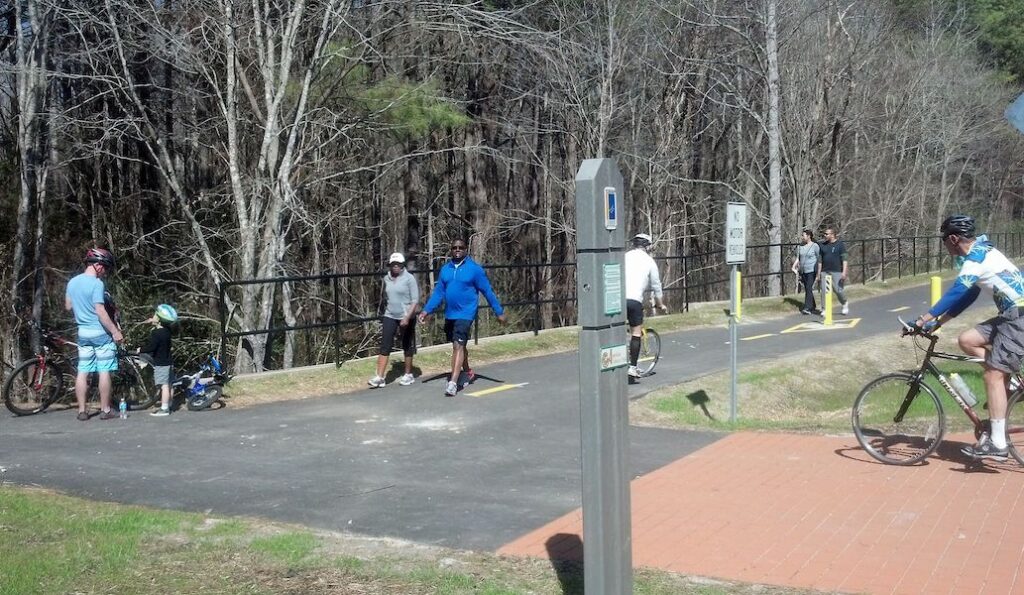
Another thing we’re super excited about is what we call connectivity grants. It’s this idea that we’ve built a little project here and there over the years with these existing programs. But what we haven’t had is this opportunity to put it all together, to realize that there are great trails and other walking and biking facilities in communities, but they often don’t connect to each other and to the places people want to go. We wanted people to have the ability to get some bigger grants that let you get all the gaps filled and connect people to the places they want to go, and to the next community over, and so on. That’s the big advance we’ve been working so hard for, and this bill has created an opportunity for us to make that switch and meet that need as our movement has matured.
Brandi Horton: That’s exciting, the idea that we can connect these gaps. Because there are 40,000 miles of multiuse trails across the country. That foundation—that bedrock of trails—is there, and now we can really create systems that are used for recreation, for transportation, for all types of activities across communities.
So, where are we? Is the program done? Are we ready? Can we apply for it tomorrow?
Kevin Mills: (Laughs.) Not quite. We got it created in the law that passed a year ago, but it didn’t have the funding attached to it. We have to get an appropriation in the federal budget for the coming year, which is being discussed right now and is supposed to be decided this month. We’re optimistic that we will get this program included in that new federal budget. And then it will be up to the U.S. Department of Transportation [USDOT] to breathe life into that, and to start asking for applications.
So we’ll work with them on that, [because] we know that there’s an incredible amount of demand out there for this. We will be reaching out to our friends all around the country saying, “This is your opportunity.”
I know it’ll be very competitive … because we know there’s so much need. But bring your best ideas forward. Show [the USDOT] that there’s all this demand. Show them the kind of impact it can have. We know once folks do that, we’ll be able to translate that into growth for the program going forward.
RELATED: Rails-to-Trails Calls on Congress to Support New and Potentially Transformative ATIIP Funding Program
Brandi Horton: Absolutely. You’re talking about demand, and one of the things that we have seen is folks just reporting to us billions of dollars’ worth of projects that are defined, planned, really ready to go. So in the absence of full funding for ATIIP (the Active Transportation Infrastructure Investment Program), what other ways are people able to leverage this new bill to close gaps in trail networks to really start to advance connectivity?
Kevin Mills: Take the additional money that went into something like Transportation Alternatives … Go ahead and apply for all your projects there. You’ll be able to do more than in the past. And then there are some other programs. One’s called RAISE, and it’s about sustainability and equity. And this program is also bigger than it has ever been before. And it’s decided by the federal Department of Transportation.
This is a program that is for all kinds of transportation—roads, bridges, transit and so on. And in 2022, 20% of the money went to trails, and another 20% of the money went to complete streets.
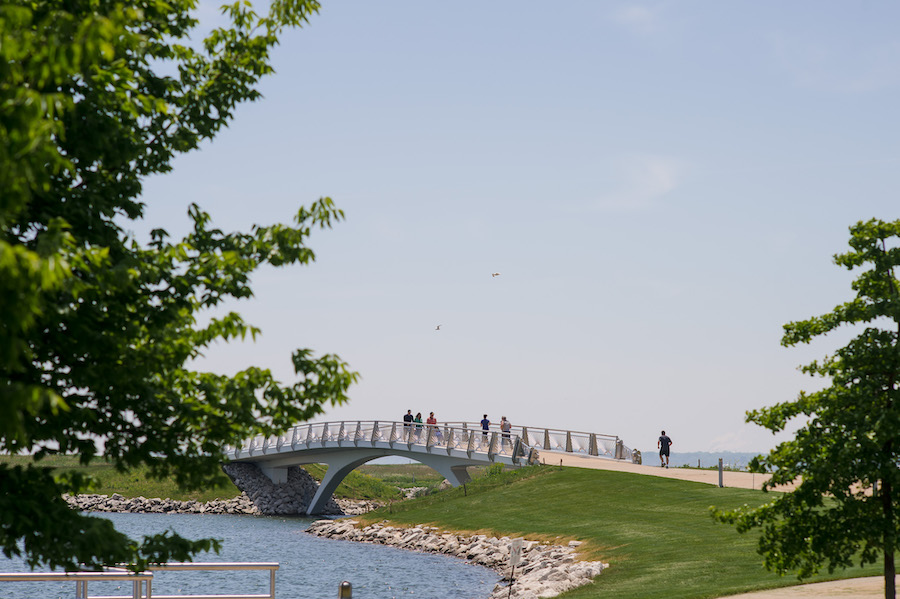
Brandi Horton: Unprecedented, right?
Kevin Mills: Right. Totally unprecedented that those were the priorities. And that really spoke well to the redefinition of the program around sustainability and equity. [Trails] deliver that, so we were very successful. And there was another round last summer, which was structured differently, where there were more integrated projects that provided a number of kinds of transportation, but the majority of those projects had trail, walking and biking elements to them. So, we also did really well when it was defined that way. We like how projects are being prioritized, and that does give us an opportunity with some of these pre-existing programs as well.
RELATED: New Federal Funding for Safe Walking and Biking Routes Could Help Meet Booming Demand
Brandi Horton: Some of the secret sauce that’s making this opportunity moment so unique is we’ve got this demand. We’ve got these projects ready to go. We have people chomping at the bit for trail networks. We have consumer demand. We have people who say they want to walk and bike more—they just need that connectivity.
We have the funding. We have policy change. We’re seeing some more prioritization of these projects at the federal level. I think one thing that’s also incredible is that as a movement, and as an organization, we’re even more ready to receive all of this windfall than ever before. We’ve got the TrailNation™ Collaborative that’s about to be stood up, which is really a peer-learning network for folks who are working on trail networks all across the country. [They’re] just ready to seize that money, put it to good work, prove what’s possible when trail networks are part of community design like this.
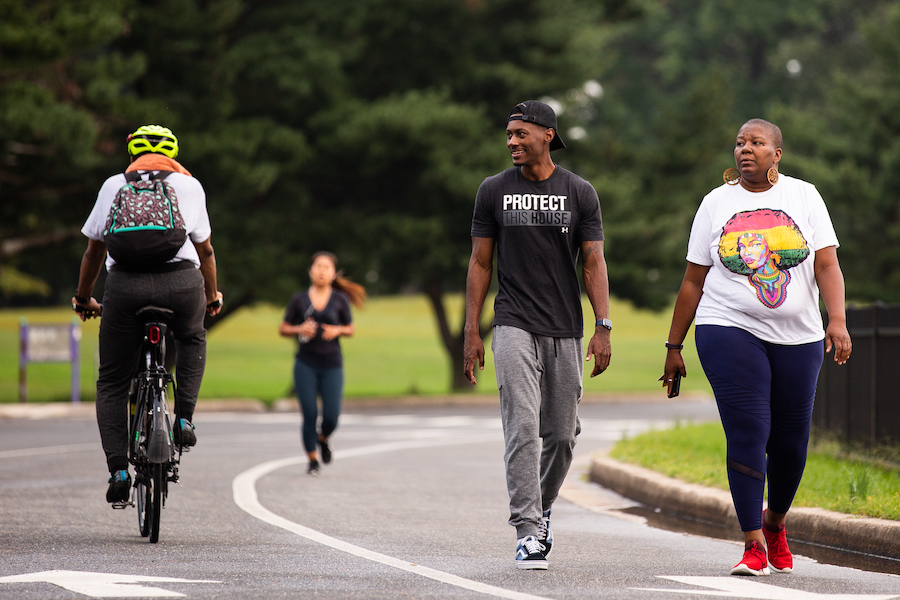
All of this is coming together at a really interesting, incredible time. Looking at 2023, what do you think success looks like for RTC and for the movement overall?
RELATED: New TrailNation Collaborative Community to Escalate Trail Network Development Nationwide
Kevin Mills: Fifteen years ago, we asked our friends on the ground, “What would you do if you had an opportunity for connectivity grants?” And they’re like, “Yeah, that’s what we want, but we don’t even have a plan yet.” And we asked a few years ago, and they said: “Here’s our plan. We have a very big vision here and great needs.”
We used that enthusiasm, that demand, to help create the program in this bill. [The movement is well established now and] ready to take advantage of this. And that’s what we’ve got to do going forward—help the movement take full advantage of all these new opportunities, make sure that more money flows to these trail, walking and biking projects so that we accelerate the pace of getting them done.
We know that once we have that success on the ground, more people will want to live in these kinds of communities. They’ll see the benefits of it. Success begets success, if you will.
Brandi Horton: So this year it’s proving out the success, proving out the strategy, getting those funds, putting them to good work—that’s what we’re focused on.
Kevin Mills: You bet.
Brandi Horton: Awesome. Thank you. It is going to be really exciting. A lot of good hard work ahead, but nothing important happens without good hard work. Thank you so much.
Inside Track Policy Newsletter
Sign up for The Inside Track to receive the latest updates from inside Capitol Hill, the White House and—when relevant—state legislatures. Best suited for: elected or appointed officials and their staff; advocacy organizations, businesses, industry groups and similar entities involved in the trail-related space; and trail and active transportation policy enthusiasts.

Donate
Everyone deserves access to safe ways to walk, bike, and be active outdoors.



